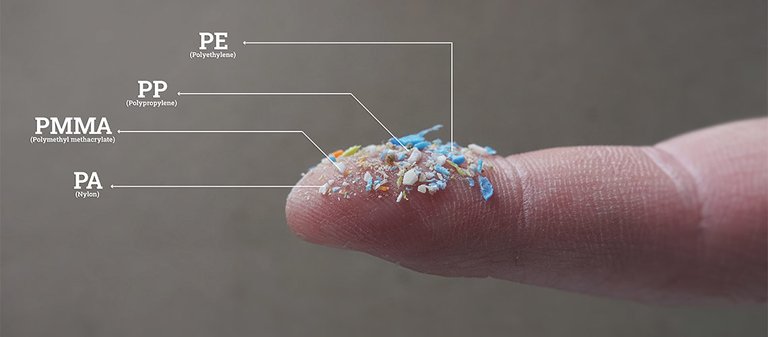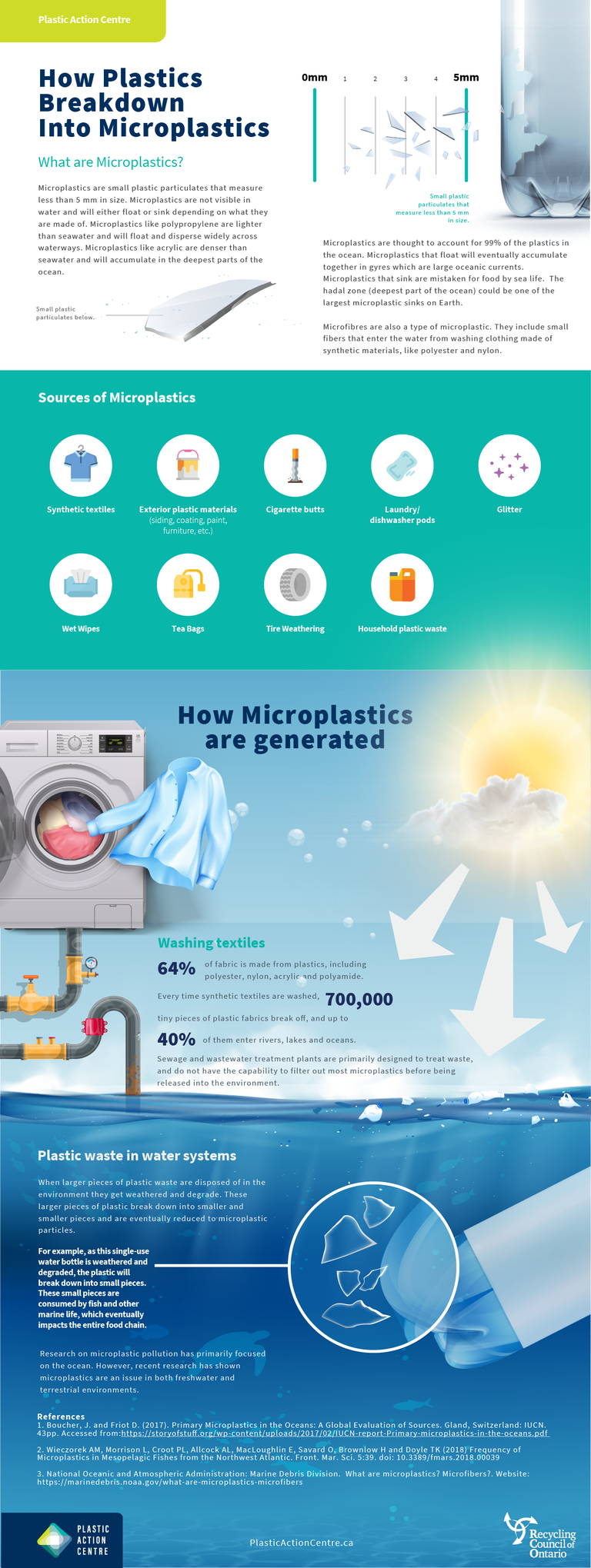It's quite frightening to discover that throughout your life you may have ingested absurd amounts of a material that definitely shouldn't be inside you, and then discover that because it's so small, it can even accumulate in your body without being able to be expelled. Microplastics are plastic particles smaller than 5 mm. The current acceleration of this chaotic stage in the world has brought us the perception of this "new environmental pollution", which has been linked to a series of health problems, including damage to the nervous system, the immune system and the reproductive system. Food is one of the main sources of exposure to microplastics. They can be found in a variety of foods, including fish, seafood, salt, drinking water and packaged foods.
 Source
SourceThese small plastic particles are generated from the fragmentation of larger plastics, which can be found in the environment, such as in the ocean, soil and air. But it is now known that certain actions and behaviors have the capacity to greatly increase our intake of these particles, such as through microwaving, when heating food in a plastic pot (even those that are considered safe and ideal for this), as you can see in this video about a recently published study on contamination.
The ocean is full of pollution and continuously degrading garbage, many fish end up eating a certain plastic fragment and this fish in turn is eaten by a larger fish, the microplastic will be absorbed by it. It is already known that even treated drinking water cannot provide sufficiently advanced filtration to prevent microplastics from passing through its reservoirs. But probably the biggest current source of ingestion of these particles is packaged and ultra-processed food.

Source
Particles can be detected using electron microscopy, for example, which is a high-resolution method that allows individual MPs to be visualized, or mass spectrometry, which is a method that allows the chemical composition of MPs to be identified. High performance liquid chromatography, on the other hand, makes it possible to separate MPs from other compounds present in food. The biggest problem with this is not ingesting the plastic itself, as is the case with chewing gum, which is occasionally swallowed and excreted in the feces; the microplastics are so small that they are capable of entering the bloodstream! By accumulating in the body, these particles can generate inflammation by inducing the release of cytokines, an immune reaction and cell damage. It's still too early to confirm certain perceptions of the size of the problem (such as cancer, infertility, etc.), but what we do know is that the issue should already be a global public health emergency.
 Source
SourceArticles used in this text: 1, 2 e 3.

Português
É bastante assustador descobrir que você pode ter ao longo de sua vida ingerido quantidades absurdas de um material que definitivamente não deveria estar dentro de você e depois, descobrir que de tão pequeno que ele é, pode inclusive acumular-se em seu organismo sem conseguir ser expelido. Os micro plásticos são partículas de plástico com tamanho inferior a 5 mm. A atual aceleração desse caótico estágio no mundo trouxe para nós a percepção dessa "nova poluição ambiental" e que tem sido associada a uma série de problemas de saúde, incluindo danos ao sistema nervoso, ao sistema imunológico e ao sistema reprodutor. A alimentação é uma das principais fontes de exposição aos micro plásticos. Eles podem ser encontrados em uma variedade de alimentos, incluindo peixes, frutos do mar, sal, água potável e alimentos embalados.
 Source
SourceEssas pequenas partículas de plástico são geradas a partir da fragmentação de plásticos maiores, que podem ser encontrados no meio ambiente, como no oceano, no solo e no ar. Mas agora já se sabe que determinadas ações e comportamentos tem a capacidade de aumentar e muito nossa ingestão dessas partículas, como por exemplo através do micro-ondas, quando se esquenta um alimento em um pote de plástico (mesmo os que são considerados seguros e ideais para isso), como se pode ver nesse vídeo à respeito de um recente estudo publicado sobre as contaminações.
O oceano está repleto de poluição e lixo em degradação contínua, muitos peixes acabam comendo determinado fragmento plástico e esse peixe por sua vez é comido por um peixe maior, o micro plástico será absorvido por esse. Já se sabe inclusive que mesmo a água potável tratada não consegue trazer uma filtragem de qualidade avançada suficientemente que possa evitar a passagem de micro plásticos em seus reservatórios. Mas provavelmente a maior fonte atual de ingestão dessas partículas é a dos alimentos embalados e ultra processados.

Source
A detecção das partículas é feita através de microscopia eletrônica, por exemplo, é um método de alta resolução que permite visualizar MPs individuais ou espectrometria de massa, que é um método que permite identificar a composição química dos MPs. Já na cromatografia líquida de alta eficiência é possível separar os MPs de outros compostos presentes nos alimentos. O problema maior disso não é ingerir o plástico em si como se faz com o chiclete que ocasionalmente é engolido e sai nas fezes, os micro plásticos são tão pequenos que são capazes de entrar na corrente sanguínea! Ao acumular-se no corpo essas partículas podem gerar inflamação, através da indução da liberação de citocinas, reação imune e lesão celular. Ainda é cedo para confirmar certas percepções que se tem do tamanho do problema (como por exemplo câncer, infertilidade, etc), mas o que se sabe é que o tema já deveria ser urgência de saúde pública mundial.
 Source
SourceArtigos utilizados nesse texto: 1, 2 e 3.

